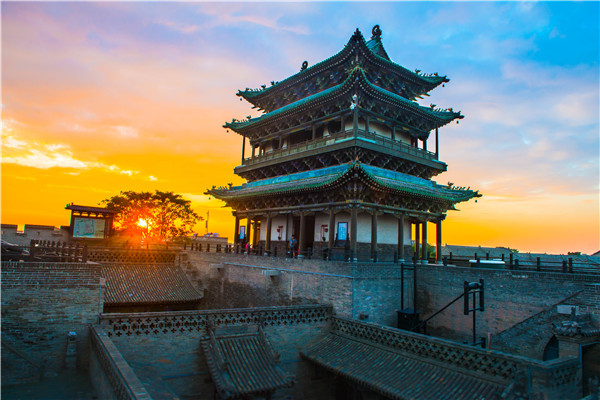 |
|
A view of Pingyao. [Photo by Khalid Sharif/For China Daily] |
For those interested in the evolution of Chinese history, Shanxi is a place to go.
On the walls of a redundant factory shed in the shadow of the medieval walls of the Chinese city of Pingyao, a fading big character slogan extols the proletarian virtues of hard work, efficiency and safety first.
The workers are long departed and, in a Chinese example of a familiar trend in urban renewal, the shed now provides exhibition space for cultural events such as the annual Pingyao International Photography Festival.
The walled city is at the geographical heart of China's northern Shanxi province, an area the size of England and Wales with a population near to 36 million and an economy founded on coal. It also contains a heavy concentration of the country's cultural and archaeological treasures, dating from the emergence of Chinese civilization along the Yellow River more than four millennia ago to more recent relics of war and revolution.
One of the exhibits at this autumn's photography festival was dedicated to the employees of the state-run Shenhua mining company, celebrated in an accompanying blurb as "the idol of the miner group in China". Straight-backed operatives in pristine uniforms stand against backdrops of airy workshops and gleaming machinery. The captions speak of their aspirations to "have a car within three years" or to "own a modern repair plant".
Until recent years, the reality for many miners in China's biggest coal-producing province was much bleaker. Unregulated mining by small producers, many of them private speculators from the more prosperous coast, fed China's inexhaustible appetite for raw materials but also left a legacy of child labor, environmental degradation and industrial disasters.
More than 270 people died in a mudslide at a Shanxi iron-ore mine in 2008, while the previous year the Shanxi city of Linfen topped a blacklist of the most polluted places in the world. These proved to be a turning points. After earlier faltering attempts to control the activities of the free-wheeling mine barons, the provincial authorities finally stepped in to nationalize their holdings.
Smaller mines and associated polluting industries were shut down in a strategy that, coupled with cleaner energy policies nationwide, led to fewer deaths and cleaner skies.
|
|
|
|
|
|
|
|
